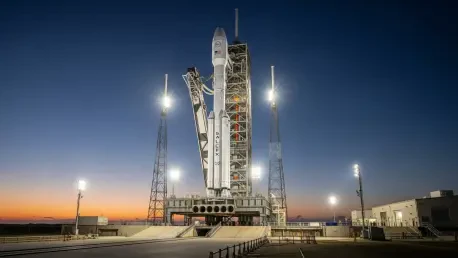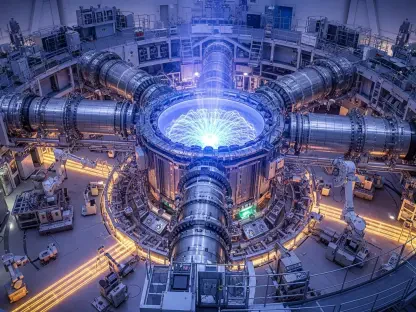In a transformative moment for the commercial space industry, imagine a landscape where the United States launches spacecraft at an unprecedented pace, outpacing global competitors and cementing its dominance in the final frontier with a groundbreaking Executive Order signed by President Donald J. Trump on August 13, 2025. This directive aims to dismantle regulatory barriers and ignite fierce competition among private space enterprises, promising a new era of innovation and economic growth. As the nation stands on the brink of becoming a global hub for space-based industries, this policy could redefine how humanity explores and utilizes the cosmos, raising critical questions about the balance between progress and oversight.
Overview of the Commercial Space Industry
The commercial space industry in the United States has emerged as a dynamic and rapidly evolving sector, driven by a surge in private investment and technological breakthroughs. Companies like SpaceX, Blue Origin, and Boeing have become household names, partnering with government entities such as NASA to push the boundaries of space exploration. This sector spans a wide array of activities, including satellite launches, space tourism, and the development of advanced communication networks, all of which contribute significantly to the national economy.
Beyond economic impact, the industry plays a pivotal role in national security by supporting defense-related satellite systems and pioneering cutting-edge technologies for strategic advantage. The growth of commercial space activities also fuels technological advancement, with innovations spilling over into other industries, from telecommunications to environmental monitoring. As a result, the stakes are high for maintaining U.S. leadership in this arena, where global competitors are increasingly active.
Key segments such as space launches, satellite services, and spaceport infrastructure form the backbone of this industry, yet they operate within a complex regulatory framework. Current policies, often criticized for being overly cumbersome, impact everything from launch approvals to environmental compliance, shaping how quickly and efficiently companies can innovate. Understanding this landscape is essential to grasp the significance of recent policy shifts aimed at unleashing the sector’s full potential.
Industry Trends and Market Dynamics
Emerging Trends and Innovations
The commercial space sector is undergoing a profound transformation, characterized by a shift toward privatization as private entities take on roles historically held by government agencies. This trend is exemplified by the rise of reusable launch vehicles, which dramatically lower costs and increase launch frequency, making space more accessible than ever before. Additionally, novel space activities, such as asteroid mining and in-orbit manufacturing, are gaining traction, signaling a future where space is not just a frontier but a marketplace.
Technological advancements, including enhanced safety systems for spacecraft and sophisticated satellite constellations, are driving new market opportunities. The growing demand for high-speed internet via satellite services, coupled with ambitious space exploration missions, acts as a catalyst for industry expansion. These developments are reshaping consumer expectations and opening doors to innovative business models that were once the stuff of science fiction.
Looking ahead, the industry is poised for further disruption as emerging players and technologies challenge established norms. Opportunities abound in areas like space-based energy solutions and lunar infrastructure, where early movers could secure significant advantages. The pace of innovation suggests that adaptability will be key for companies aiming to thrive in this fast-evolving environment.
Market Performance and Future Projections
Recent data underscores the robust growth of the commercial space industry, with market size reaching billions of dollars annually and showing consistent upward trends in investment and revenue. Performance indicators, such as the increasing number of successful launches and expanding satellite deployments, highlight a sector in the midst of a boom. Private sector contributions have notably outpaced public funding in certain areas, reflecting strong market confidence.
Projections aligned with the goals of the recent Executive Order suggest a dramatic increase in launch frequency over the next five years, from 2025 to 2030, with ambitions to establish the U.S. as the epicenter of global space activities. Analysts anticipate that market expansion will accelerate as regulatory hurdles diminish, potentially doubling the industry’s economic impact within this timeframe. Such forecasts hinge on sustained policy support and private sector innovation.
A forward-looking analysis indicates that current trends, bolstered by favorable policies, could position the sector for unprecedented growth. However, external factors like global economic conditions and technological breakthroughs will play a critical role in shaping outcomes. Stakeholders must remain vigilant to capitalize on these projections while navigating potential risks that could alter the trajectory of this ambitious vision.
Challenges Facing the Commercial Space Sector
The commercial space industry, despite its promise, grapples with significant challenges that threaten to impede progress. Regulatory complexity stands out as a primary obstacle, with lengthy approval processes and bureaucratic delays often stalling critical projects. These hurdles not only increase costs but also deter smaller companies from entering the market, limiting competition and innovation.
Technological barriers further complicate the landscape, as developing reliable reentry systems and advanced spacecraft demands substantial resources and expertise. Ensuring safety and reliability in these systems remains a persistent concern, particularly as the industry explores uncharted territories like deep space missions. Overcoming these technical challenges requires sustained investment and collaboration across public and private sectors.
Infrastructure constraints also pose a formidable challenge, with many existing spaceport facilities ill-equipped to handle the projected increase in launch activity. Modernizing these hubs is essential but faces hurdles from funding shortages to environmental compliance issues. Solutions such as improved interagency coordination and streamlined licensing processes could alleviate some of these pressures, paving the way for a more robust and responsive infrastructure network.
Regulatory Reforms and Policy Implications
A cornerstone of the recent Executive Order, signed on August 13, 2025, is a comprehensive set of reforms designed to invigorate the commercial space industry. Titled “Enabling Competition in the Commercial Space Industry,” the directive introduces measures like expedited environmental reviews and categorical exclusions under the National Environmental Policy Act, aiming to cut through red tape that has long hampered progress. These changes target a faster path to approval for critical operations.
Specific reforms focus on streamlining licensing and permitting for launches, reentries, and novel space activities, ensuring that U.S.-based operators face fewer delays. Federal agencies, including the Department of Transportation and the Department of Commerce, are tasked with implementing these policies, with new administrative roles created to prioritize deregulation and innovation. This coordinated effort seeks to align processes across government bodies, reducing duplication and enhancing efficiency.
While deregulation is a central theme, the policy also acknowledges the need to maintain compliance with environmental and legal standards. Striking a balance between fostering growth and upholding necessary safeguards is a delicate task, with provisions ensuring that reforms operate within existing legal frameworks. The long-term success of these changes will depend on how effectively agencies navigate this balance while supporting industry ambitions.
Future Outlook for Commercial Space Competition
The long-term impact of the Executive Order promises to reshape the commercial space industry, positioning the United States as a leader in a highly competitive global market. By reducing barriers to entry, the policy is likely to spur a wave of innovation and investment, attracting both domestic and international players to American launch facilities. This could solidify the nation’s role as a central hub for space endeavors by the end of the decade.
Potential disruptors, such as intensifying international competition and unexpected technological leaps, will test the resilience of this strategy. Nations with ambitious space programs could challenge U.S. dominance, while breakthroughs in propulsion or materials science might shift market dynamics overnight. Staying ahead will require agility and a commitment to continuous advancement from both industry and policymakers.
Consumer demand for space services, alongside national security priorities, will further influence the sector’s trajectory. As satellite-based technologies become integral to daily life and defense needs grow, the industry must adapt to meet these evolving expectations. Investment in innovation, infrastructure, and strategic partnerships, combined with favorable global economic conditions, will be crucial drivers in realizing the full potential of this transformative policy.
Conclusion and Strategic Recommendations
Reflecting on the sweeping changes introduced, the signing of this Executive Order marked a pivotal moment for the commercial space industry, setting a bold course for growth and competition. The detailed reforms and ambitious targets underscored a commitment to overcoming longstanding barriers, energizing a sector poised for historic expansion. This policy intervention captured a critical juncture, aiming to redefine the boundaries of what is possible in space exploration and commerce.
Looking ahead, stakeholders must seize this momentum by prioritizing strategic investments in cutting-edge technologies and modernized spaceport facilities. Policymakers should focus on sustaining interagency collaboration to ensure that regulatory reforms translate into tangible outcomes without compromising safety or environmental standards. Private companies, meanwhile, are encouraged to explore emerging markets like space tourism and resource extraction, leveraging the newfound flexibility to innovate.
A key consideration for the future lies in fostering international partnerships while safeguarding national interests, ensuring that the U.S. remains a leader without alienating potential allies. Emphasizing education and workforce development in space-related fields also emerges as a vital step to support long-term growth. By acting decisively on these fronts, the industry stands to not only meet but exceed the lofty goals set forth, heralding a new chapter in humanity’s journey beyond Earth.









